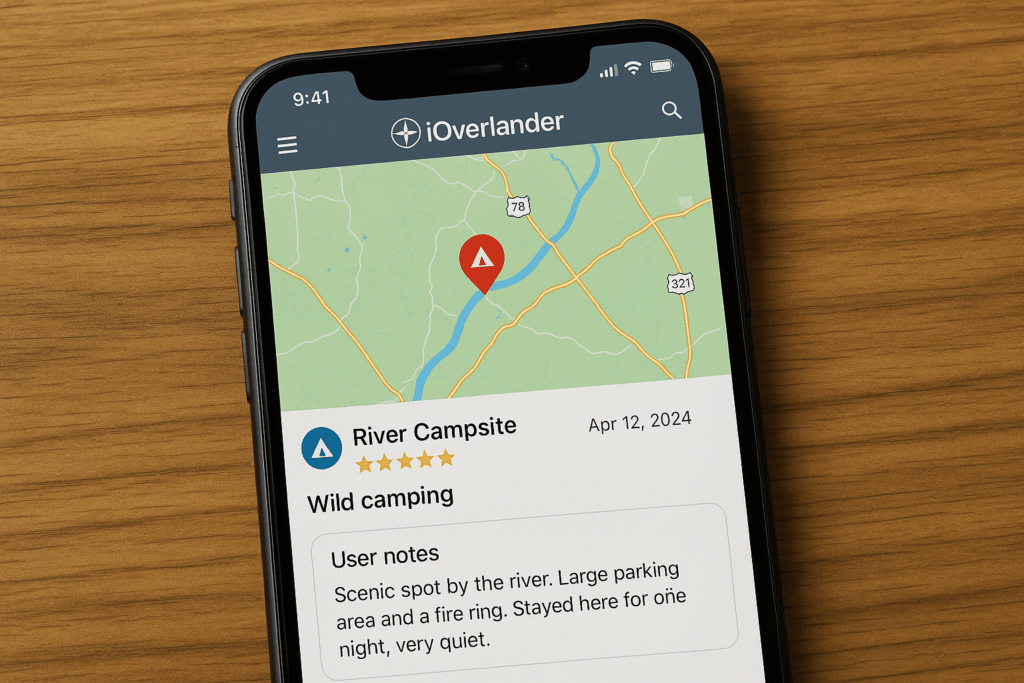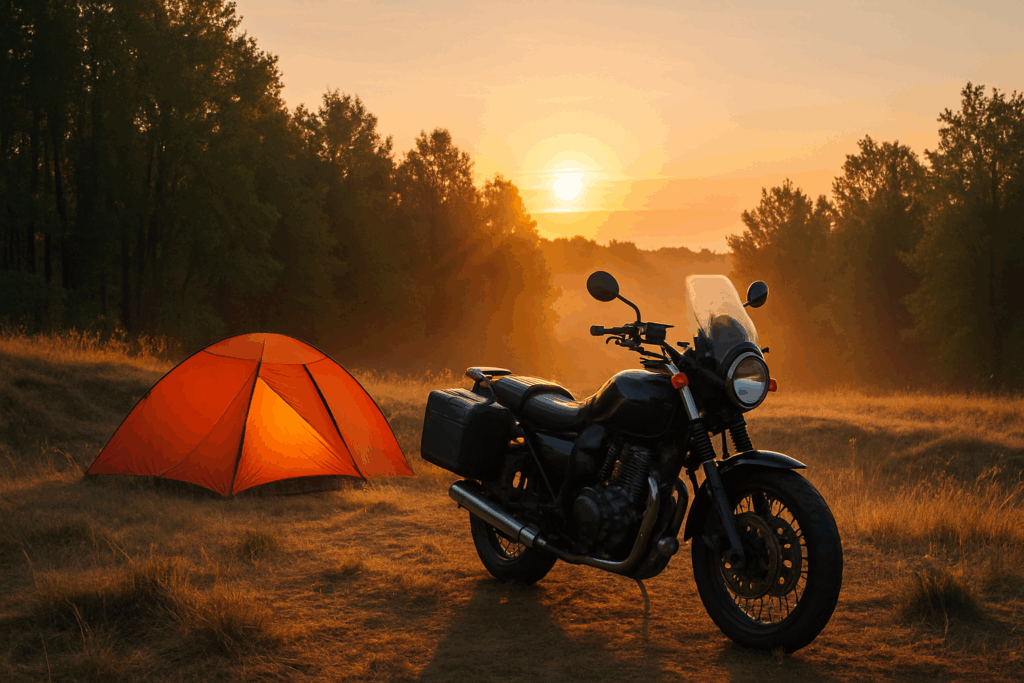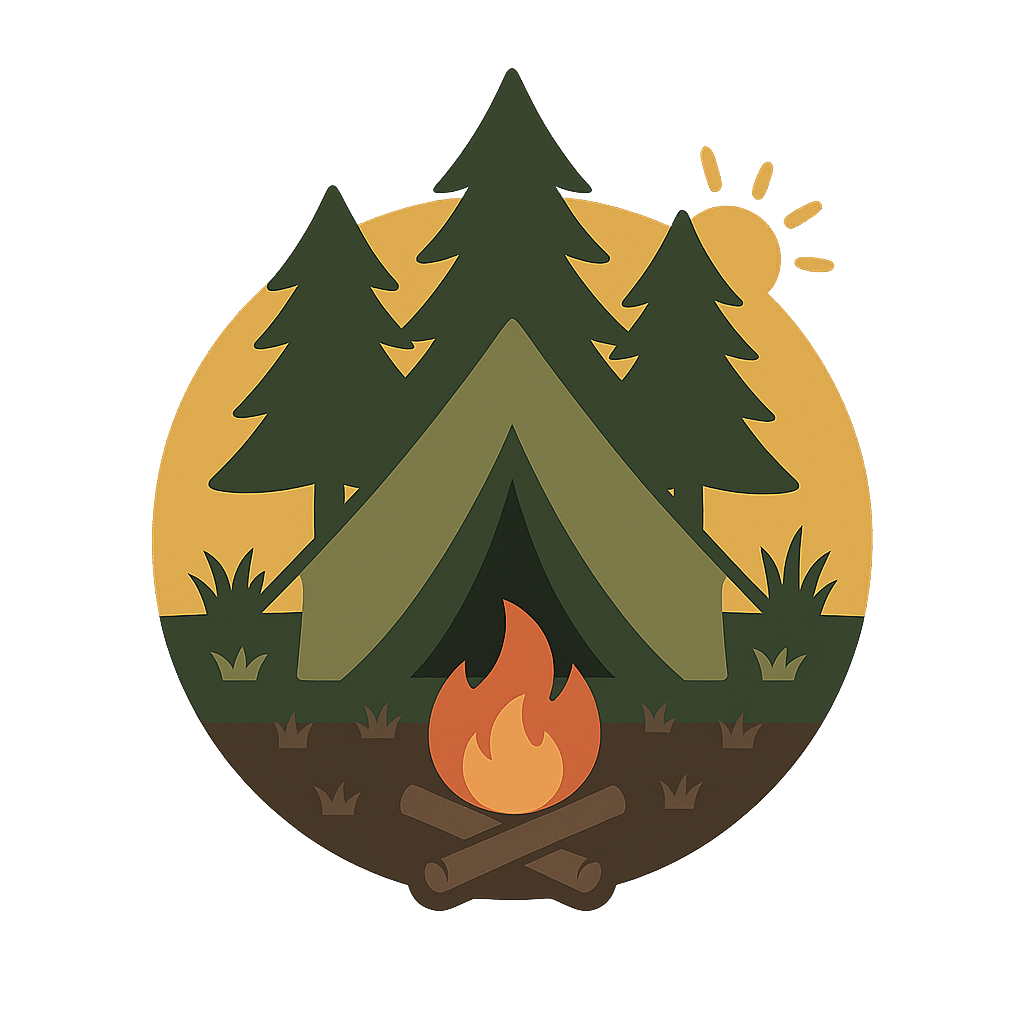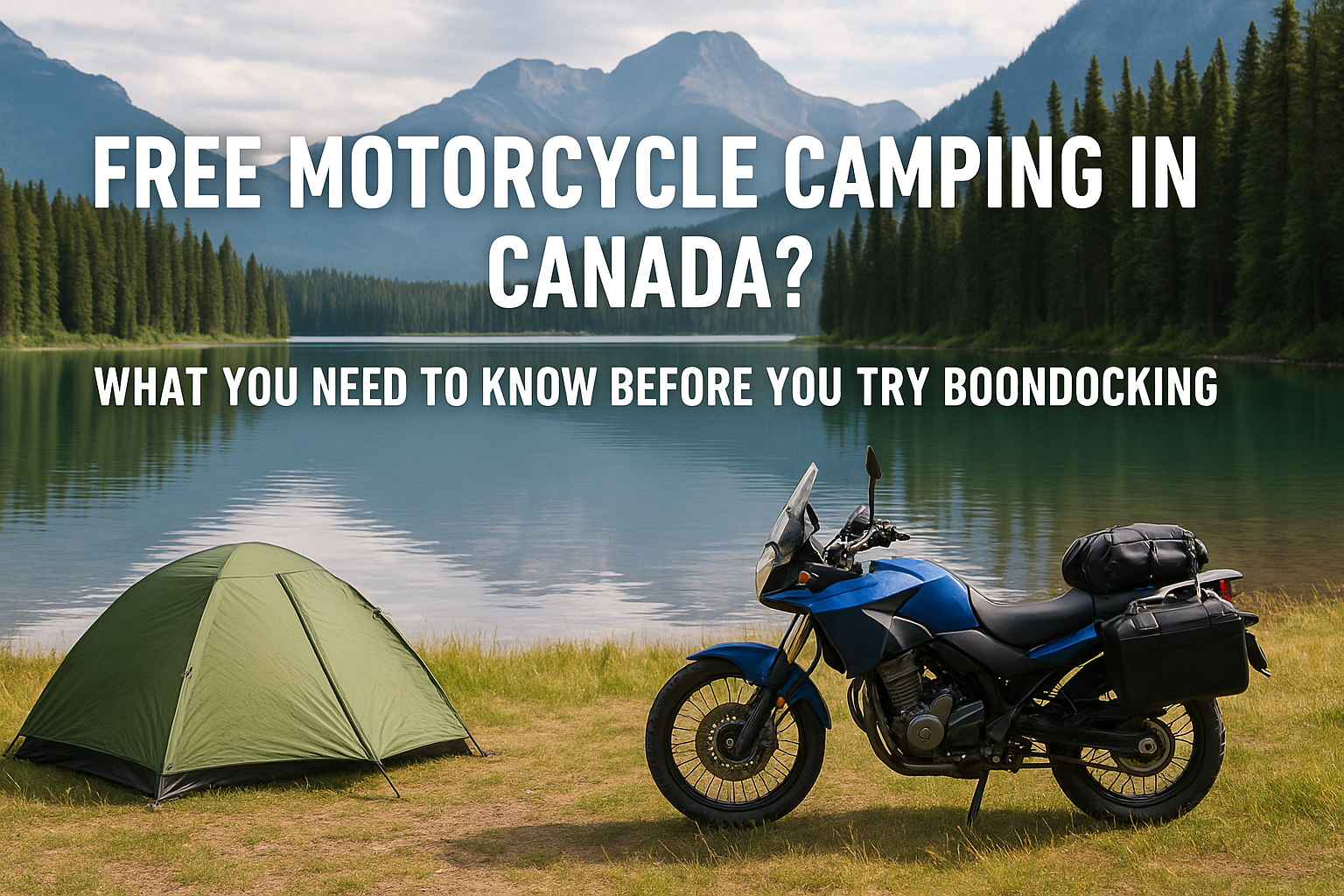If you’re a motorcycle camper, Canada might seem like paradise: open roads, vast wilderness, and thousands of kilometers of unregulated land. And yes, free camping in Canada is absolutely possible—but only if you understand the rules, risks, and rider-specific realities.
Boondocking on a motorcycle hits different. You’re not rolling up in a van with curtains and cabinets—you’re rolling in with whatever you could bungee to a saddlebag. I remember the first time I pulled over on a gravel bend in northern Ontario. The air was cold enough to sting my cheeks, and I could feel every sound: the crunch of boots, the distant snap of a twig. There’s no door to lock, no bed to curl into. Just you, the wind, and the nagging question: Am I actually allowed to sleep here?
This guide will walk you through everything you need to know before pulling over and setting up for the night—from finding safe, legal spots to surviving off-grid with limited storage.
🏕️ What Is Boondocking?
Let’s define it clearly:
Boondocking is free camping on public or crown land without hookups, amenities, or formal campsites.
No toilets.
No water.
No reservations.
Just you, your bike, and the wild.
🇨🇦 Is Boondocking Legal in Canada?
Yes—and no. It depends where you are and how you do it.
✅ Legal boondocking areas for motorcycles:
- Crown land in most provinces (especially British Columbia, Alberta, and Ontario)
- Public forestry roads and recreation sites
- Some backcountry trailheads and pullouts
- Select rural rest stops or gravel turnouts on non-private land
🚫 Where it’s not allowed:
- National Parks (unless you’re at a designated backcountry site)
- Provincial Parks and Conservation Areas
- Private logging roads
- First Nations territory (unless permitted)
- Farm land or fenced land—don’t assume it’s “unused”
Pro Tip: Use government geoportals to locate crown land boundaries. Ontario, for example, has an interactive map showing designated free-use areas. Screenshot or download it before riding into no-signal zones.
🏍️ Why Boondocking on a Motorcycle Is Different
What’s easy in a van gets risky fast on two wheels.
Here’s what motorcycle campers must consider:
- Limited gear: You can’t carry gallons of water or big shelters.
- Security: You’re more exposed to wildlife and human threats.
- Weather sensitivity: No warm cabin to retreat into.
- Terrain: You can’t handle deep ruts or sand traps like a 4×4.
So while Canada is full of “open land,” not all of it is accessible or survivable by moto-riders. You need to boondock smarter.
📍 How to Find Free Motorcycle Campsites in Canada
This is the part where planning pays off. Here are 4 proven methods:
1. Use iOverlander + Backroad Mapbooks
- iOverlander is a community-driven app with GPS-tagged free sites and rider notes.
- Combine with Backroad Mapbooks for detailed terrain and forest road layers.

2. Look for FSR (Forest Service Roads)
- BC and Alberta are goldmines for FSRs with pullouts.
- Look for decommissioned logging areas or wide gravel bends off fire roads.
Warning: Many FSRs are washboarded, and some are impassable after rain. Know your tires and turning radius.
3. Talk to Locals in Small Towns
- Gas station attendants, park rangers, and even roadside farmers often know where “people camp for free.”
- Canadians are surprisingly helpful—especially when you’re polite, honest, and clearly self-sufficient.
4. Ride Past the Obvious
- If it looks too perfect, too open, or already has a fire ring—it’s probably well-known and patrolled.
- Go 10–15 minutes deeper than the crowd to find true solitude (and fewer fines).
🧭 How to Know if You’re On Crown Land
Use these checks before pitching camp:
- Are there posted signs? If it says “No Trespassing” or “Private Land,” believe it.
- Are you beyond a gate or fence? That’s usually private.
- No signage, no fences, dirt road, and no infrastructure? Probably crown land.
- Still unsure? Sleep discreetly, pack up early, and leave no trace.

🛠️ Gear Tips for Motorcycle Boondocking
Here’s the part nobody talks about: what gear actually works when you’re in the middle of nowhere on two wheels.
🏕️ 1. Low-Profile Tent
- Choose a freestanding tent under 40” high. Camouflage colors help if you need to stealth camp near roads.
- Don’t bring bright orange unless you want attention.
🔥 2. Stove You Can Use in Wind
- Avoid canister stoves that sputter in light breezes.
- Go with alcohol or solid fuel stoves with built-in wind guards.
💡 3. Battery Lantern Over USB Lights
- You won’t always be able to charge. Use AAA-powered lights with long burn times.
- Headlamp + mini lantern combo works best.
💧 4. Water Filtration Is Non-Negotiable
- A Sawyer Mini or Katadyn BeFree lets you drink from rivers, lakes, and puddles.
- Don’t rely on store-bought bottles. If you’re 20 miles from town, you’ll regret it.
🥫 5. No-Cook Meal Kit
- Bring calorie-dense foods that require zero heat:
- Tortillas + hard cheese
- Nut butters
- Canned lentils or beans
- Oats soaked in cold water
- Tuna or salmon pouches
Bonus: Pack energy chews or glucose tablets in case of surprise fatigue.
🐻 Wildlife, People, and Safety
Free camping sounds romantic—until you’re jolted awake by a low growl that might be a bear or just your imagination running wild. I’ve had nights where every rustle in the bushes sounded like it had claws. Once, a guy in a pickup pulled over just to “see what I was doing out here alone.” He meant no harm, maybe, but my heart didn’t know that. That’s when you realize how much your safety depends on instincts, positioning, and how fast you can unzip your tent.
🐾 For Wildlife:
- Don’t cook near your tent. Even if you’re exhausted, cook at least 50 feet away.
- Hang or seal all scented items in bear-safe containers or hang bags if trees allow.
- Keep your boots and gloves inside the tent vestibule—not outside. Foxes and raccoons love stealing them.
🧍♂️ For People:
- Don’t park in visible open areas. Tuck in behind trees, ridgelines, or boulders.
- If someone approaches uninvited, stand tall, stay calm, and let them speak first.
- Have your phone, knife, or bear spray within arm’s reach—but not aggressively visible.
🚿 Hygiene, Water, and Leave No Trace
Just because it’s free doesn’t mean you’re allowed to trash it.
- Use biodegradable wipes or Dr. Bronner’s with at least 200 feet from any water source.
- Dig a cat hole for #2 and cover it completely.
- Never burn trash. Pack it all out—even micro litter like twist ties or toothpaste caps.
If you leave a mess, expect more bans, closures, and angry locals next season.
🏁 Final Thoughts: The Freedom Is Real—But So Are the Rules
Free motorcycle camping in Canada is the ultimate test of self-reliance.
There’s something raw and electric about waking up on crown land. No neighbors, no buzzing generators—just the hush of trees and maybe a moose crashing through the brush a hundred yards away. One morning near Golden, BC, frost coated my tent zipper. I brewed coffee with shaking hands and felt… wildly alive. KOA can’t give you that. It gives you WiFi and noise. But this? This gives you the reminder that you’re still a creature of the wild.
But that freedom comes with responsibility:
You’re representing motorcyclists, campers, and non-destructive adventurers. The more respectfully we roam, the more open these lands will remain.
So:
- Plan loosely, but prepare thoroughly.
- Ride farther than the crowd.
- Leave it cleaner than you found it.
- And remember: freedom doesn’t mean unaccountable.
It means knowing exactly what you’re doing—and doing it with care.

